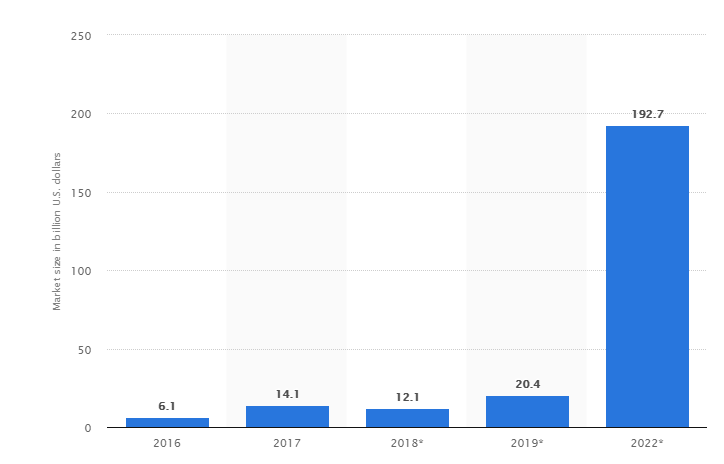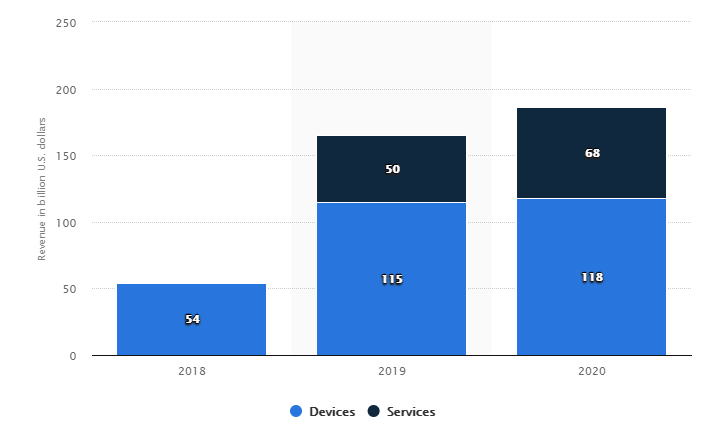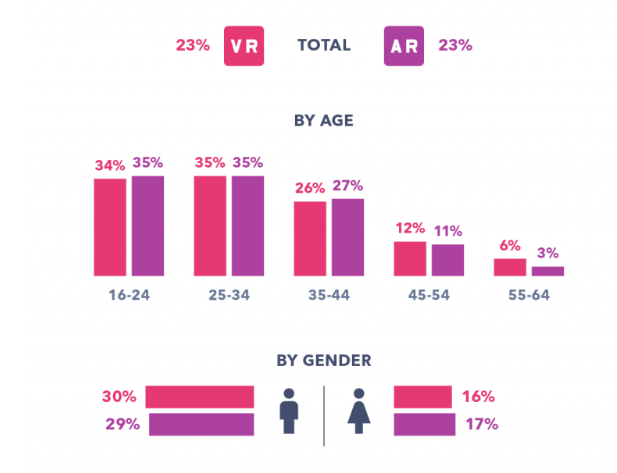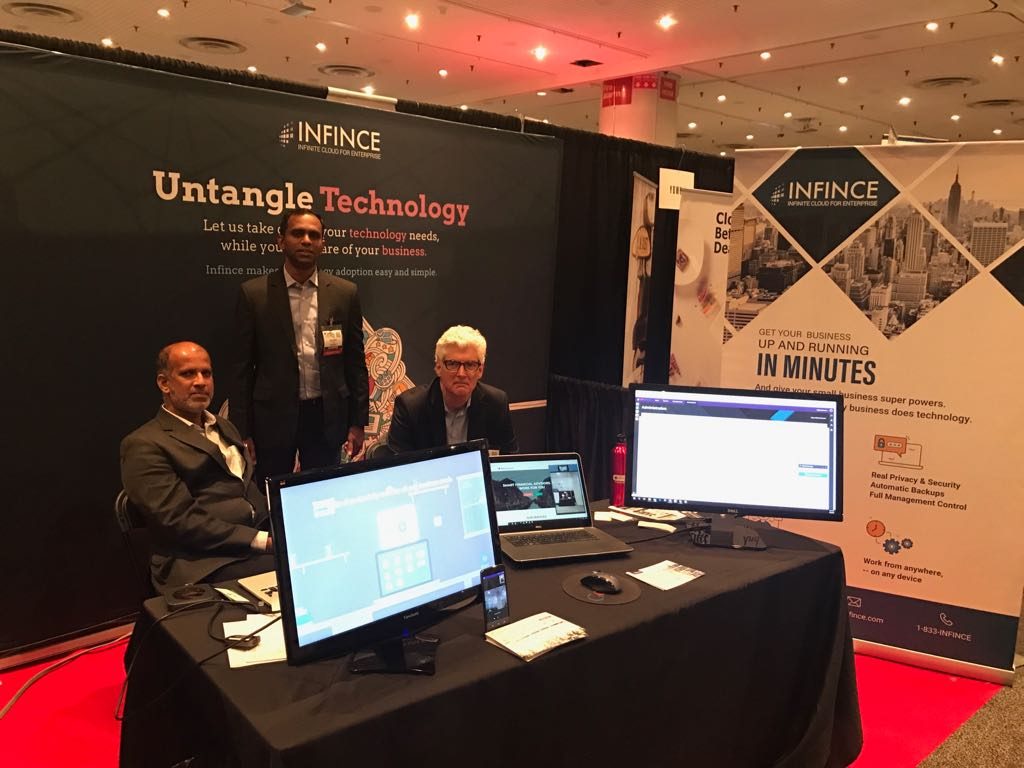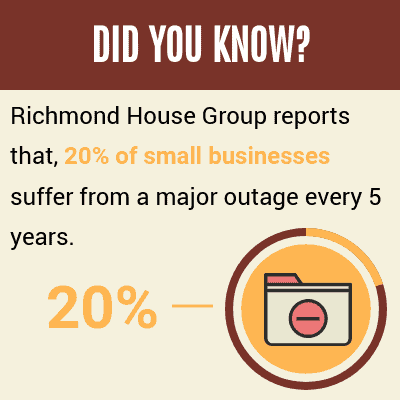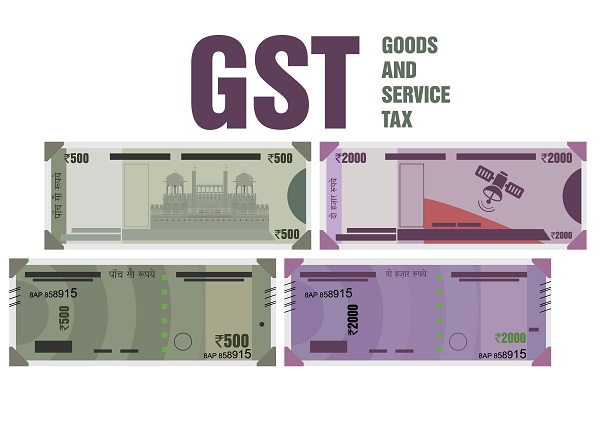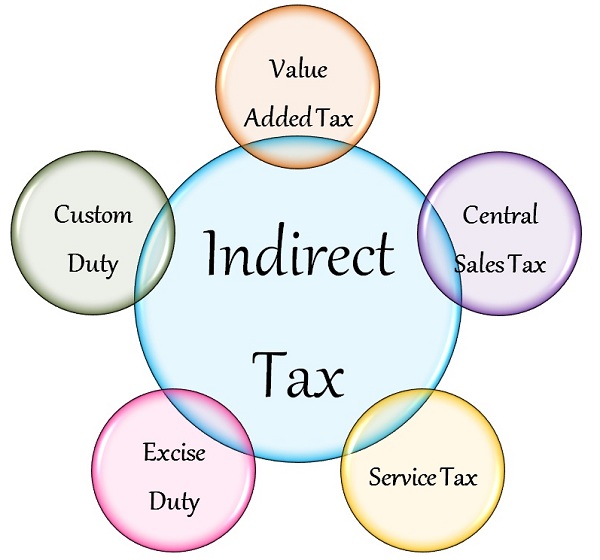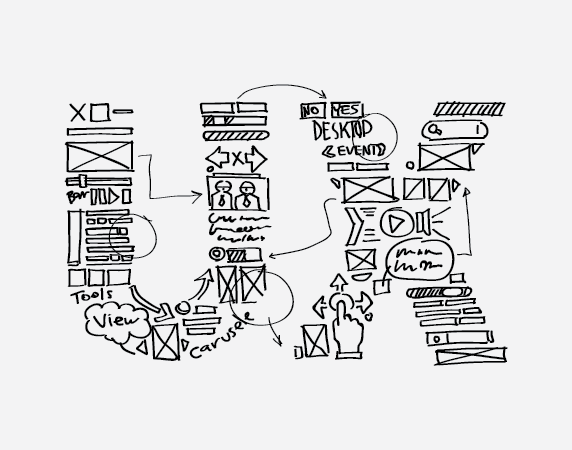Category: Uncategorized
Stay up to date on what's new

Featured Blogs
Stay up to date on
what's new



Talk To Our Experts
With the Industrial Internet, Industry 4.0, industrial robots and more, the manufacturing sector is seeing sweeping reforms in their processes and core functions. These reforms are making them faster, bigger and better and all of this has been possible because of digital transformation.
Digital transformation has changed the face of the manufacturing industry. From behemoth machinery and an army of workers, manufacturers have transformed themselves to a sleek, modern and more efficient entity. This blog will explore how digital transformation has made that possible. We will also see the most important digital trends in the manufacturing industry.
The Importance of Digital Transformation in Manufacturing
Change has been constant in the manufacturing industry. Right from the Industrial Revolution of the 1700s to today’s Industry 4.0, the manufacturing sector has had to adapt to the changes in political climates, economic upheavals, and technology. As technology fast forwards in our times, it is imperative that manufacturers keep up. The only way they can prepare their businesses for the digital revolution of our day is through digital transformation. Here are a few ways in which digital transformation is benefitting the manufacturing industry.
1. Keeping up with Customer Demands
A recent Harvard Business Review study of 75,000 people, showed that the most important factor in building customer loyalty towards an organization is the reduction of effort. Be it in collecting information on products, customer service or getting their needs met faster and more effectively, customers value the path of least effort. This is where the speed of innovation comes in. Manufacturers need to create products that are software-enabled and connected, and they must do this before anybody else!
A digital factory design where development, production, and other cycles aren’t siloed is imperative to this. Digitalization makes it possible for all these cycles to work in tandem and innovate much faster. The vision of a “smart factory” is that it can make critical product decisions about customer demand, design, material selection, scheduling and pricing, all in one process. This would speed up innovation, create personalized products and enhance the overall customer experience exponentially.
2. Refining Processes
Manufacturing is largely a process-driven industry, so there is an incredible amount of focus on process refinement. Digital transformation makes this possible in many ways. Automation of processes is a major step in that direction. This reduces manual errors, helps automatically detect production inefficiencies, allows for the pre-testing of new ideas more economically and helps optimize the performance of workers.
Predictive disruption analytics, KPI monitoring, and other digitally enabled tools help in refining processes as they are happening. This allows manufacturers to identify weaknesses and make improvements quickly. Machine Learning enables instructions and intelligence to be built into the machines as they are developed and deployed. As these machines are intuitive, they learn from the environment and aid in the continuous process refinement.
3. Revenue Gains and Cost Reduction
A PwC survey of over 2,000 participants from companies in nine major industrial sectors and 26 countries, predicts that Industry 4.0 will drive $493B in revenue gains and $ 421B in cost reductions globally by 2020.
These numbers are realized by the many opportunities brought in by digital transformation. The digitization and integration of vertical and horizontal value chains help bring a cohesive focus to the organization’s processes and production. The creation of new digitized products with analytical capabilities and integrating new methods of data collection and analysis helps manufacturers understand and cater to the needs of customers more effectively. Disruptive digital business models allow for a more agile approach throughout the organization and thus optimizes performance and cost. All this and more contribute to significant cost reductions and an increase in revenue.
Digital Transformation Trends in Manufacturing
Different technologies have opened up a wide area of possibilities in the manufacturing industry. Here are 3 Trends that are doing wonders in the manufacturing space.
1. IoT And Industry 4.0
61% of enterprises say that the “Internet of Things (IoT) plays a role in their digital business strategies with manufacturing and high-tech leading all other industries.” The manufacturing industry is evidently recognizing the critical impact of IoT in gaining a competitive edge. In 2016 alone, IoT, accounting for more than $178 billion in revenue. There are many avenues where IoT has helped streamline and simplify manufacturing processes. It is also a key component of Industry 4.0 and enables connected devices. This allows for the streamlining of internal operations and the optimization of products and operations through insights from the cloud.
Industry 4.0 has also made possible the trend of mass customization, which is characterized by a better and more effective response to the demands of customers. Connectedness and mobility have led to faster innovation and response. Logistics and supply chains have also benefited greatly from this connectedness.
Related Reading: Find how IoT is reshaping industries.
2. Machine Learning
Machine Learning has elevated the processes and operations of the manufacturing industry in many ways. A PwC study entitled Digital Factories 2020: Shaping the future of manufacturing showed that the adoption of machine learning and analytics by manufacturers to improve predictive maintenance is predicted to increase in the next five years by 38%. Advanced machine learning algorithms are able to identify and implement improvements in processes and operations, thus leading to reduced costs and increased revenue.
A study by The World Economic Forum (WEF) discussed how manufacturers are recognizing the ability to combine emerging technologies including IoT, AI, and machine learning to improve asset tracking accuracy, supply chain visibility, and inventory optimization. Thus, in various ways, Machine Learning is greatly contributing to lowering the cost of production, improving the speed of innovation and operations and enhancing the customer experience by accurately identifying and meeting customer demands.
Related Reading: Check out this infographic to learn more on the disruptive innovation: Machine Learning.
3. Advanced Robotics
Robotics is no more confined to the realms of accomplishing repetitive assembly line tasks. Robots are now intuitive, trainable and have the ability to mimic human attributes of dexterity and critical thinking. This makes them a formidable force in manufacturing.
Robots with advanced sensors and collaborative ability are now being deployed in hazardous environments to collect information and data pertinent to the manufacturing industry’s needs. This contributes greatly to providing safe working environments for humans. Apart from the physical robotic machines, Robotic Process Automation (RPA) has also grown in importance. RPA goes a step above and beyond physical tasks and replicates human thinking ability and transforms processes and operations to the next level. Recently, the term ‘cobot’ was coined by professors at Northwestern University in America. This underlines the significant progress in Robotic Process Automation (RPA) where robots are now able to collaborate with humans in the workspace.
Related Reading: Read on to know how robotic process can help accelerate business growth.
Owning Digital Transformation
There can be no doubt that digital transformation is the way to go if manufacturers want to keep up with competition and stay relevant. Capitalizing on these digital trends for your business need not be a daunting task. At Fingent, we help manufacturers make sense of digital transformation and adopt it successfully. We can help you make a success of your digital transformation. Get in touch with us and see how.
Stay up to date on what's new

Featured Blogs
Stay up to date on
what's new



Talk To Our Experts
A few years back, Augmented Reality (AR) and Virtual Reality (VR) sounded revolutionary, more like the utopian world of the Jetsons. But today, with miraculous capabilities of accomplishing seemingly impossible tasks, AR and VR are invading our lives. With the popularity of Google Earth and Pokemon Go, 2017 showed us remarkable growth and awareness of these technologies. According to Statista, the global augmented and virtual reality market size is expected to reach 20.4 billion U.S dollars in 2019.
Although AR and VR are rapidly transforming various industries, thoughts like-what exactly are these fast-moving digital wonders and which one would mainstream first, linger in many minds. Here are the answers to all!
Augmented Reality – Augmenting the Real World
Augmented Reality is an interactive technology that capacitates the power of augmenting the real world environment with computer-generated perpetual information. What’s amazing about AR is that it brings components of the digital world to the natural environment. With the capabilities of narrowing spaces between reality and technology, augmented reality is expected to revolutionize the world.
Fun Fact: Studies reveal that by August 2017, the total number of downloads of Pokemon Go from Google Play market alone was 100 million.
Augmented reality is known best from the Pokemon Go and Snapchat filters. The IKEA Place app has also managed to win hearts by enabling users to decorate homes using the AR technology. According to a Statista report, augmented reality is expected to generate a revenue of 118 billion U.S dollars from AR devices and 68 billion U.S dollars from AR services.
Fun Fact: The survey conducted by GlobalWebIndex in 2018 showed the following consumer’s perception of augmented reality’s potential in various sectors.
Augmented reality with its capabilities to deliver an interactive and enhanced experience, is expected to project its best in retail and marketing industries. Increasing the array of channels to guide purchases, AR can turn to become the next big thing for retail stores. With AR technology, advertising and marketing industries can also provide more fluid customer experience by utilizing real-time user preferences and data.
Related Reading: Augmented Reality is also growing its pace in the travel industry. Take a look at how innovative travel apps are mesmerizing customers.
Virtual Reality – Exhibiting an Artificial Reality
Virtual Reality is an immersive technology that lets you experience a three-dimensional computer generated environment incorporating a mixture of interactive hardware and software. This technology blinds you out from the real world and takes you to a virtualized reality or an artificial environment. Literally speaking, virtual reality possesses the power to make you believe that you are teleporting.
The most popular forms of virtual reality we witness today are the VR Headsets. Google Earth and the other 360 degree videos on Facebook and YouTube are also versions of the VR technology. According to Statista, the market size of virtual reality hardware and software is predicted to increase from 2.2 billion U.S. Dollars seen in 2017 to more than 19 billion U.S. Dollars by 2020.
Experts predict VR to project rapid growth in entertainment and education industry. Possessing abilities to provide an immersive experience and a unique level of interaction, VR has the potential to evolve faster in these industries. With virtual reality headsets and mobile games, VR has already marked a significant position in the entertainment field.
Fun Fact: According to a survey in 2018 conducted by the GlobalWebIndex, the following is an estimate of consumer’s perception of virtual reality’s potential in various sectors.
Although, adoption of VR in the education industry is very much in its infancy, yet it is expected to transform classrooms and the way students explore colleges in the near future. The one VR miracle that has already gained popularity among students is the Gear Up NC VR app that is enabling students to screen through North Carolina colleges hassle-free.
Fun Fact: Nearly half of the population (42%) predicts that the education industry will become commonplace for VR projects to grow in the next five years. 97% of the people who have used VR for teaching have agreed that VR has the potential to engage students better.
Case Study: Fingent assists the university in developing projects involving upcoming technologies such as AR, VR, and AI
AR or VR – The Technology to Create the Big Impact
Although both the technologies have their own share of pros and cons, augmented reality has a lower awareness rate as compared to virtual reality. This, however, could be due to the age group engaging with the technology. According to a survey, both AR and VR technologies have engagements mostly clustered around the 25-34 age group.
Speaking of potential, although AR is statistically proved to be less popular, yet 50% of the population who have used both these technologies, believe AR to have more potential than VR. Only 47% of these technology users believe VR to create a big impact in the future.
With both augmented and virtual reality offering very different experiences, the fight on which technology ranks the best still remains as an unsolved puzzle. Like how Google’s Clay Bavor once tweeted – “VR vs. AR cheat sheet: VR can take you anywhere. AR can bring anything to you. Both are important. Neither will win”.
Only the future can decide on which technology would steal more hearts and create a big bang. Some experts believe that with the development of more equipment, the line that delineates these two technologies will probably start to get blurry. However, in today’s world, both augmented and virtual reality are equally transforming industries in its own ways. To learn more about how AR and VR can reshape your business, get in touch with our tech consultants now!
Stay up to date on what's new

Featured Blogs
Stay up to date on
what's new



Talk To Our Experts
The logistics sector has become a key performance indicator of the economy. Various estimates put the total market size of the logistics sector in a country on an average to be between USD 90-125 billion!
The Current Sketch of the Logistics Market Place
Logistics and transportation managers often find the movement of freight between trade partners an uphill battle! It is necessary to make the transit easier, cheaper, and more efficient. The freight managers turn to Transportation Management Systems (TMS) for a smooth operation. Over the last 3 decades, such systems have evolved significantly and are typically available as standalone software packages, as part of a larger Enterprise Resource Planning (ERP) solution, or in Software-as-a-Service (SaaS) formats.
Logistics cost is 9% of the GDP in the U.S. This shows an increasing demand on the logistics sector to provide solutions, which are required to support future growth.
Looking at TMS as “one of the fastest growing enterprise application markets” in its most recent TMS Global Market Research Study, ARC Advisory group says that a gigantic 63 percent of companies would witness at least a 5 percent increase ( that is, 23% stated a 10 percent or more increase) in total freight costs if they had to forsake their TMS and get back to more manual transportation planning and execution processes. According to ARC, a Logistics achieves large savings based on process enforcement, visibility, analytics, and optimization, “with virtually no other supply chain application offering so many different forms of optimization.”
Related Reading: Top Challenges Faced by Logistics Management Today
Top Areas to Focus on a Long Term Logistics Strategy
According to survey reports in the “Transportation Management Systems” Study by the Peerless Research group and Logistics Management, and some other Successful Logistics Businesses, the top areas that are important when looking forward to a long term logistics strategy are:
- Maintaining high levels of customer service (96%)
- Lowering costs (94%)
- Improving efficiencies and productivity in logistics operations (93%)
- Achieving the ability to target logistics initiatives that drive business growth (79%) Improving Asset Utilization (74%).
Other factors involved are as follows:
- understanding and controlling costs (55 percent),
- better shipment planning (55 percent), and
- greater in-transit visibility (52 percent).
- electronic communications with customers and carriers (45 percent),
- overall supply chain processes (45 percent), and
- carrier and partner collaboration (43 percent).
These key factors are important to carve out a long term solution for their business growth and to remain sustainable and cost-effective in their transportation expenses.
Maintaining High Levels of Customer Service Is Essential In Logistics Services
Logistics partner is the company that ensures the delivery of your products on time and cost-effectively. A single rupture can be fatal to your company. Hence it is important to monitor the quality of the product or direct service provided. Since for many online businesses, the final touchpoint with their customer is their logistics provider, customer service is the most essential factor in Logistics!
With the benefit of logging in whenever and wherever required to know the shipping details, a TMS allows analysis of various reports to know the delivery details of carriers. Based on this data, greater predictability can be ensured along with providing a hassle-free delivery of the product to your customer.
The same data can also be used to interact with carriers and other members in the supply chain. This helps in resolving issues if any and proactive improvement which leads to an increase in the customer service metrics.
Lowering Costs with A Properly Managed Logistics System
Poor logistics analysis, planning and decision making can result in excessive expenditures, missed delivery deadlines and damaged goods. This is why optimizing operational efficiency and reducing logistics costs are essential factors to remain financially viable. Here are a few factors that affect Logistics costs:
- Increase In Fuel costs.
- Delayed arrivals at ports, that leads to higher transportation fees.
- Complex regulations that govern international trade such as document processing, compliance checks, and so on.
- Frequent delivery delays and increased warehousing expenses.
Process Automation
The logistics business drives on quick service and fast turn-around times. Yet, there is a lot that goes on in the background before a shipment or a truck is in transit. The reality is that a lot of these processes are manual and eat up a lot of time, which adds to the overall TAT. It is evident that ongoing investments are made in automating processes and this gives one the choice to expand without increasing other additional overheads.
As mentioned earlier the logistics industry is witnessing a continuous growth. Although there are multiple challenges that exist in this industry, the growth of logistics is going to be a very key indicator of the performance of our economy.
Improving Productivity in Logistics Operations with a TMS
The first step to achieve a Logistics task is planning. With proper planning, we will be able to prepare for the unforeseen circumstances. These situations can be related to:
- The products
- Unavailability of the transportation
- Any internal issue in the organization
- Research and pick the correct goods.
This is where Automation has a vital role in business process optimization. When automation is deployed in the logistics process, timely updates regarding the movement of goods will be provided. The service operator and the customer will get details regarding:
- The goods that are dispatched from the supplier
- Procurement of the products at the warehouse
- Delivery of the goods at the destination
This saves a considerable amount of time because manual interference is eliminated. Moreover, accurate tracking helps in improving the overall process management. Similarly, the account details and employee details can also be managed.
Targeting Logistics strategies that Drive Business Growth
Trumping over your competitors is possible with proper logistics strategies. This is because logistics costs are related to improved efficiencies. With proper strategies, every logistics firm that is struggling to boost their operations can incorporate these strategies for a proper logistics network optimization.
Improving Asset Utilization and Warehouse Management with a TMS
Common warehouse logistics challenges revolve around every Logistics industry The concerns can extend into extending into inventory management, cost controls, human resources, risk management, and security, among other factors.
With a proper logistics system that is integrated with your ERP or Warehouse Management System, you can easily start to calculate asset utilization! For expedient logistic solutions and seamless technological transformation, reach out to Fingent, the top custom software development company and Unlock the power of prompt logistics solutions while embracing their expertise in cutting-edge technology.
Related Reading: 5 Emerging Trends That Logistics Managers Cannot Afford to Ignore
Stay up to date on what's new

Featured Blogs
Stay up to date on
what's new



Talk To Our Experts
Infince is blazing a new way for small businesses to run software. Introduced by Fingent during the 2018 Small Business Expos in New York and Boston as a revolutionary way to “untangle technology,” Infince not only simplifies the way small businesses acquire, operate, and maintain the technology they need to compete, it also greatly lowers IT costs.
“Although today’s successful large enterprise thrives on its cloud-based capabilities, over 70% of small businesses fail to take advantage of available and affordable technology that would significantly drive their growth,” said Stephen Cummings, Senior Vice President at Fingent. Talking to small business owners at the expos, he found the level of frustration with the current piecemeal approach to small business IT readily apparent. “We found that small business owners often struggle with technology decisions because they are short of time, perplexed by the technical complexities, worried about online security, unfamiliar with readily available solutions, or unable to find knowledgeable technical people to help them.”
Of course, companies need to have a unique online identity with a domain name, a website, company email, and social media. Beyond that, even companies that are not “tech companies” realize that to compete in any industry, they need the right business software, networking, and computers, and support services. Getting these systems set up, and keeping them running securely and reliably, is a significant drain in terms of cost and management attention.
(The Infince team at the Small Business Expo, New York)
Almost any small business is at a big IT disadvantage when competing with large companies. Economies of scale, and enhanced purchasing power allow large companies to spend significantly less per employee, than small companies. SearchCIO.com puts the average small business expenditure on IT at 6.9% of revenues, more than twice what large enterprises spend proportionally.
Omar Khan, Fingent’s Infrastructure Lead, puts things into perspective: “For a small business to compete effectively, IT needs to be a resource that can be consumed like the phone service or the cable service. That would free a small business to focus on enhancing its core capabilities and still leverage technology to propel growth.”
With Infince, the small business has a single integrated place to operate and maintain its IT software and hardware. Infince is able to bring together software solutions from a range of providers on a fully managed platform. By integrating software, hardware, and related services on a cloud-based infrastructure, the platform dramatically cuts the cost of IT. This, in turn, gives small businesses many options for technology that would otherwise have been cost-prohibitive. The quick-start, on-demand, availability of Infince solutions make it easy to get solutions up and running, without a big time commitment, so time-to-value is minimized.
IT costs per employee range significantly by company size and by industry. Estimates of the IT cost for a small business range between $2,770 (Spiceworks) and $9,900 (IDC) per employee per year. Infince makes it more economical for a small business to get the equivalent of big business technologies. A starting subscription of $50 per month provides up to 10 employees basic IT capabilities, and access to a wide range of affordable (some free) third-party offerings for CRM, marketing automation, and solutions for their other needs.
“Infince is a complete and worry-free cloud offering that lets a business adopt technology quickly and affordably, and with integrated support. It lets businesses take advantage of a needed technology without distraction, so that they can stay focused on achieving their core business goals,” said Stephen Cummings.
For more info, see www.infince.com.
Stay up to date on what's new

Featured Blogs
Stay up to date on
what's new



Talk To Our Experts
Disclaimer: The contents of this article reflect the opinion of the author and do not represent Fingent’s view about Facebook’s or Google’s policies
The latest advertising policy from Google and Facebook on cryptocurrencies has been hailed by users, media and even those in the cryptocurrency industry. It is easy to understand why.
Advertising, in itself, is unpopular.
The constant badgering of advertisements on social media, together with the exaggeration of product benefits has led to a lack of trust between advertisers and consumers. With every other cryptocurrency promising to be the next Bitcoin, users on Facebook and Google will be happy to see fewer advertisements promising instant riches and get rich quick schemes. Indeed, cryptocurrencies and ICOs have been viewed, as a fool’s gold.
Like any nascent tech sector, the cryptocurrency area is extremely unregulated, offering an avenue for fraudsters to take advantage of investors.
“Pump and dump” schemes, a testament to greed and naiveté, have made few people wealthy at the expense of many who bought into the utopian “get rich quick” dreams and “mathematical guarantees” offered by cryptocurrency promoters. Platforms like Facebook and Google provide scamsters with the opportunity to micro segment and target thousands of unsuspecting users, at a very low cost. Gullible investors often invest their life’s savings without understanding how currencies are programmed or how the market for these works. In this context, banning cryptocurrencies and related advertisements, to reduce the risk of consumers being scammed by such groups, appears to be a sensible measure.
But on the other hand there is also a fair argument to be made this ban is unfair.
For one, the policy impinges on doing legitimate business. Advertising is protected by the First Amendment. The Federal Trade Commission (FTC) can regulate the communication of deceptive information. The action by Facebook and the proposed action of Google to ban cryptocurrencies is violative of the freedom to advertise because no federal agency in the US has banned these, and both Google and Facebook are not federal agencies but private entities. As of the time of writing this article, the Securities and Exchange Commission (SEC) has not declared cryptocurrencies illegal. The Commodity Futures Trading Commission (CFTC) considers bitcoin as a commodity and treats it on par with other commodities. It has allowed the launch of bitcoin futures. It has also approved a platform for trading and clearing of virtual currency derivatives.The IRS treats bitcoins as property. Some states are in the process of enacting legislation. The Uniform Law Commission is considering legislation to regulate transactions in cryptocurrencies as transactions in financial assets.
However, at present, there is no law requiring social platforms or search platforms to ban cryptocurrency advertisements.
The moot point for Facebook and Google to consider is whether cryptocurrencies are legitimate or not.Since there is no authority that has banned cryptocurrencies in the US, it is quite unfair to ban ads on cryptocurrencies.
Since the federal or state agencies are ambivalent about cryptocurrencies it is also startling to see forward looking companies such as Google or Facebook to effect a ban ostensibly to safeguard their customers.
But, they forget that in trying to safeguard one set of customers they are denying important information to another set of customers.
Customers, who look up to Facebook and Google for information on certain products and services such as those related to cryptocurrencies. By this action, both have now bunched cryptocurrencies with weapons, drugs and counterfeit products. In fact, by banning ads on cryptocurrencies, they are perhaps forcing customers to seek information on cryptocurrencies in other channels of communication, which may not have as robust a policy on deceptive advertising as Facebook. One wonders why, with all the resources at the disposal to these behemoths, both companies do not consider it worthwhile to weed out scams or to stop issues like cryptojacking and educating consumers about the risks across all categories instead of imposing blanket bans.
The policies framed by the two internet giants are not specific and very broad.
The operative part of Facebook’s policy is “financial products and services that are frequently associated with misleading or deceptive promotional practices.” One could argue that most advertisements are deceptive promotional practices. Many cryptocurrencies are simply advertising their products and services with straightforward call to action without indulging in any hyperbole. A blanket ban that affects legitimate businesses is unfair.
Then there is a matter of core values and principles.
Facebook and Google have used technology to connect people across national borders. Cryptocurrencies can help people conduct business across national borders without middlemen, providing financial inclusion. Like the early days of Facebook and Google, Blockchain technologies like Cryptocurrencies are a product of innovation and its full effect is yet in the making. To deny full expression to this technology by the two advertising behemoths is unfair. It looks as though Google and Facebook have taken the path of least resistance by resorting to a blanket ban.
Unsurprisingly, there is the insinuation of strategic motives behind these bans.
On one hand, while technology has made both Google and Facebook iconic brands and large advertising platforms, it is hard to believe that both companies consider it not worth their while to use technology to detect deceptive ads! So does the blanket ban have to do with competition and strategy rather than to ostensibly safeguard user interests?Is it their inability to compete with financial services offered by competitors, that has resulted in the ban? Is Facebook under pressure to follow the official Chinese line on the ban. Or, perhaps the aim is to put up walls till they are able to get around deciding their own crypto strategies. We may never know. Also, both Google and Facebook, plagued by issues about privacy breaches, may not want to find themselves in the dock again for having provided their platforms to scamsters. Nonetheless, to say that all ICOs are scams, impacts people who run legitimate businesses, and is a case of throwing the baby with the bath water.
In summary, while the intention to prevent fraud, curb ponzi schemes and protect consumers is good, who should make decisions about the legitimacy of a business, and the restrictions that should be placed on an industry? Should it be a corporate like Facebook and Google who makes such decisions or should it be those representing society.
Unfortunately, lawmakers are often light years behind technology and work in a reactive mode rather than being proactive.
References:
- Facebook’s policy: https://www.facebook.com/business/news/new-ads-policy-improving-integrity-and-security-of-financial-product-and-services-ads – (last accessed March 25, 2018)
- Google’s new restricted financial products policy : https://support.google.com/adwordspolicy/answer/7648803 ( last accessed March 25, 2018)
- Marketwatch.com: https://www.marketwatch.com/story/heres-how-the-us-and-the-world-are-regulating-bitcoin-and-cryptocurrency-2017-12-18 (accessed March 25, 2018).
Stay up to date on what's new

Featured Blogs
Stay up to date on
what's new



Talk To Our Experts
As a business owner of a growing business, how would you feel if –
1. Your front door is locked while your customers are waiting to buy from you.
2. Your employees are idle while there are orders waiting to be processed.
3. Your orders are not being shipped on time.
4. Your whole customer data is wiped out and your backups do not work due to an error.
While the answers may seem obvious, many businesses do not have a process to mitigate these risks. As your business grows, IT infrastructure, which includes your servers, networks and equipment become critical components of your business. In this article we look at some of the most common server or IT infrastructure related issues that affect sales, productivity, customer satisfaction and data loss.
Server inefficiencies are so prevalent in IT infrastructure that some downtime is usually expected. Some companies guarantee a 99.5% uptime, which on paper sounds pretty good. Is it though? 99.5% uptime means your server could be down for over 44 hours a year, which does not sound all that great when you consider that your website, email, business apps or other critical components might be down when you need it the most.
In a recent survey, it was found that over 73% of businesses have suffered some type of downtime. A 7.5 hour downtime of the cloud results in a estimated loss of over 70 Million USD. How do you ensure that your digital assets are available and do not suffer an unexpected outage?
Backups and Restore tests
Your data is an invaluable asset to your business and ensuring its integrity is important. Backups of financial data, employee records, customer information and application code will ensure that you have the ability to revert back to validated content if your server suffers from an outage or data corruption.
Firewalls and Anti-virus
Cybersecurity threats are one of the biggest risks for businesses in 2018. As IT systems get more complex and sophisticated, and as businesses rely more on technology for operations, hackers and viruses become more advanced and malicious in their attempts to hold businesses hostage. Frequent monitoring of access logs, timely updates of anti-virus software, security audits and ethical hacking processes will go a long way in keeping out the bad guys.
24/7 Monitoring
Monitoring your servers, reviewing your server access logs , managing patch releases- all executed round-the-clock on a need basis helps identify risks and threats before they become issues. Traffic spikes or unauthorized login attempts can all be identified and preventive actions taken. In case of an outage, the monitoring team can take corrective actions so that your customers or employees are not affected.
Patches and Update management
Preventive maintenance on servers ensures that updates to the operating system and applications are applied immediately and consistently, to keep out unauthorized access and secure high uptime.
How Fingent helps improve business continuity, uptime and productivity for small business?
Fingent provides end-to-end server management services for small and mid size organizations. Our services include analysis of your existing IT infrastructure, identification of critical components and expert recommendations about your server architecture to reduce the risk of downtime. Our corrective and preventive maintenance activities, and 24/7 round-the-clock monitoring help discard false alarms, while ensuring that we take action on risks before they become a major issues. We also offer advanced cybersecurity audits and tests that evaluate your servers for exploits and vulnerabilities before hackers can. So together, we take action to mitigate the risk to business due to data loss or downtime.
We offer these sophisticated server management services at an affordable cost to our small and mid sized business clients. These services have helped them reduce costs, increase productivity and improve customer satisfaction. All this, at the cost of a matinee movie evening with friends!
Stay up to date on what's new

Featured Blogs
Stay up to date on
what's new



Talk To Our Experts
Learning Management System, commonly abbreviated as LMS, is a software tool or a web-based application which is used to plan, administer, implement, assess, track, report and deliver a particular learning process. Some of the common features of LMS include document management, multiple device access, rosters, student engagement, assessment and testing, grading, registration control and course calendars. Corporate Learning Management Systems come with enhanced features, such as automated enrollment process, improved security, white labeling and multi-lingual support.
With the enhancement in technology and emergence of many latest techniques and methods, there are transformations that are being implemented in learning management systems as well. On the basis of current and upcoming technological advancements and user expectations, here is a list of four emerging trends in LMS that have been forecasted.
-
Cloud-based LMS:
Cloud computing is a disruptive innovation that has brought a revolution in the technical processes and methods. The use and application of cloud computing in the area of LMS is expected to grow in the coming years. It will also provide numerous benefits to the service providers and users with a decrease in the total cost of ownership (TCO). The additional set of benefits will include improved security, increased flexibility, and adaptability with enhanced connectivity and transparency. This will be advantageous for the large-scale as well as small-scale learning organizations. Some of the companies have already implemented this approach and have released the cloud-based LMSs in the market. The top players on the list include Adobe Captivate Prime, ExpertusONE, Dokeos, Administrate, LearnUpon, Agylia, Matrix LMS and many more.
-
Video & Gamification Modules:
The global game-based learning market was valued at US$3.487 billion in 2017 and is expected to grow at a CAGR of 19.60% to reach a market size of US$8.532 billion by the year 2022. It is a scientific fact that visual elements and graphics have a higher impact on the learning abilities as compared to the theoretical content. The engaging power and visual appeal of the games are far better than the plain text static graphics. The use of videos and gamification modules in LMS will allow the learners to gain a better understanding of strategies, decision-making abilities, time management requirements, risk-taking etc.
The use of games in the current LMS is limited and is expected to improve in the future-learning systems. Streamed and uploaded videos will be integrated with the future LMS.
-
Personal Learning Environment (PLE):
There have been modifications witnessed in the PLE for LMS. The adequate use of PLE can have positive implications on the user interface of LMS. The future learning management systems must make use of PLE to allow the users to easily manipulate the interface for increased freedom with the usage of the system. The end user requirements should be fulfilled by integration with the social media platforms and blogs. Semantic search functions shall also be applied in the LMS along with the tracking of learner’s interests and knowledge gaps. User-based content generation should be added as an additional utility. Such features in the learning management systems will have a higher applicability in the corporate environment. Enhanced project-based training and learning, information sharing, conflict management etc. will be made possible as a result.
-
Talent Management:
The companies have begun the process of integration of Talent Management and Learning Management Systems. The primary motive of a talent management system is to highlight the gaps in knowledge and skills of an employee while LMS works towards filling of such gaps and enhancement of the skills of the employee.
The future LMS should be designed in such a manner that it will be able to suggest new courses and learning resources specific to the learner.
The present-day learning management systems are not the same as the systems launched 10 years back. The future is also expected to witness multiple changes and transformation with a few of them covered above. The use of LMS is expanding in the field of education, healthcare, marketing, finance, engineering, pharmaceutical etc. It is required for the business organizations and units to continue their research on the methods that can be adapted for enhanced design and implementation of these systems for the increased learning of the employees and the associated resources. The use of Business Intelligence (BI) concepts should be explored by the companies in the area of LMS.
Stay up to date on what's new

Featured Blogs
Stay up to date on
what's new



Talk To Our Experts
Goods and Services Tax (GST) is now a fait accompli. GST would amalgamate various Central and State taxes into a single tax, mitigate cascading or double taxation, and facilitate a common national market. While the simplicity of the tax leads to easier administration and enforcement, enterprises have a tough time transitioning to the new system. The old taxes would be halted on the last day, and the GST would go live the next day.
Need help with integrating GST on your SAP implementation? Click here to setup a free discussion with our SAP experts.
Enterprises need to start the transition process well ahead of time, to avoid chaos and confusion, and make sure they are compliant with GST from the word go.
Get the Systems in Place
Regardless of the industry or sector, any business is likely to have a unique journey for GST implementation. However, a common thread underlying the journey would be the readiness of IT systems and procedures.

Upgrade SAP and Get it Ready
SAP India is getting ready with GST related changes in their products. The exact nature of the changes would obviously be not explicit until the GST law actually comes to pass. However, there are certain prerequisites to meet, which can be done now, before GST comes into effect.
For starters, businesses would have to upgrade to the relevant version of SAP. Businesses would also need to deploy an enhancement pack and service pack as part of this readiness. The necessary minimum patch level for SAP application, for GST, is SAP ERP 6.0 (600) SP26 or higher.
Need help implementing GST on your SAP software?Click here to get in touch with us for a quote.
GST related changes done by SAP are based on TAXINN concept of tax determination. Businesses still using TAXINJ concept of tax determination will have to migrate the SAP system from TAXINJ to TAXINN. TAXINN is a condition based procedure whereas TAXINJ is a formula based procedure. Migrating the SAP system from TAXINJ to TAXINN is a mini-project in itself, and may require anywhere between three to six months, depending on the complexities involved.
Businesses would also need to make the following specific changes.
- Master Data Set-up: Create or update the master list of vendors, customers, materials, and services. The master data will have a major impact on GST, and successful GST migration and implementation requires getting the master data ready well before the GST start date.
- Destination Set-up: Create a business place for each area of operations, and assign to plants. The GST tax regime has “place of supply,” where the taxation will be determined.
- Tax and Pricing changes: Set up the required adjustments in tax procedures and pricing procedures
- RICEFs: Make sure the necessary forms, layouts, and modifications to EDIs are in place. Upload the required programs well in advance, as soon as it becomes available.
Since the final GST law is not yet enacted, and the rules yet to be framed, SAP has been releasing SAP notes based on the draft Model GST law SAP has already released Notes for DDIC changes, Screen Changes, Master Data and transaction data, and some other facets of GST. Businesses need to track and install the requisite notes and follow the manual correction parts. A certain level of customization would be required, according to the business process.
The full list of released SAP Notes for GST may be found here.
Backend online support/integration
Businesses with GST registration need to connect SAP to GSTIN, the online portal that serves as the central console for all activities such as tracking of transactions, making input and output credits, the filing of returns, and payment of taxes. SAP would be providing the required interfaces to upload the invoice in the GST network.
Make Necessary Tweaks to the Business Processes
Businesses would also have to make some changes in their business procedures, if not already following the recommended procedures, and such changes would have to reflect in the ERP suite.
Some of the tweaks required would be:
- Reconfiguring tax computation procedures based on the new rules
- Refining all tax-related outward and inward business processes
- Adopting sequential numbering for outgoing invoices
- Adhering to the new reporting and printing structure

Here are some of the changes, based on the Model GST Law, for which businesses would have to be prepared, and tweak their business processes.
Deploy a System for Input Credits
GST levies and collects tax at each stage of sale or purchase of goods or services, based on the input tax credit method. GST registered businesses may claim a tax credit to the value of GST they pay on the purchase of goods or services.
The main task with GST is the adjustment of input credits available for the purchase of inward goods and services against the sale of goods and services. The present system is a hodgepodge of different Input and Output accounts for various taxes such as VAT, CST, Service tax, Various Excise duties, Additional Duties of Customs, CVD, etc. The complicated CENVAT credit rules, factoring these different input and output accounts, will no longer be required. The multiplicity of central and state indirect taxes, such as Service Tax, Value Added Tax, Central Sales Tax, Central Excise Duty, Octroi and Entry Tax, Additional Customs Duty (CVD), Special Additional Duty of Customs (SAD), central and state surcharges and cesses, and more, will be subsumed in only three taxes: SGST and CGST on intra-state supply of goods and services, and IGST (to centre) for inter-state supplies.
- Input SGST will be available for set off against output SGST and output IGST.
- Input CGST will be available for set off against output CGST and output IGST.
- Input IGST is allowed for setoff against output IGST, CGST And SGST.
- Also, cross-setoff between goods and services will also be allowed
Under GST, all accounting systems would require only six accounts for credit collection and set off.
Get the Tax Base and Rate:
The first step is to identify the tax base, or whether the product or service is covered under GST. Most products, with the notable exclusion of petroleum products, are under GST though. Post GST, just about all transactions except salaries, banking receipts and payments will come under the scope of GST.
The next step is to identify the tax rate. The GST Council has recently fixed the tax rate for 1211 items, under 98 categories of goods. The standard GST rate of 18% applies to most items, though there are Nil, 5%, 12%, and 28% rates applicable as well. Businesses need to be double sure as to which rate their products and services apply. There is also the minimum threshold of 20 Lakhs turnover to consider.
SAP is the market leader in ERP solutions, but the solution is only as good as the implementation. Leaving gaps in the value chain can lead to the system breaking down and going awry, and the ensuing mess can even lead to the closure of operations. Make sure to cover all the bases now, before GST finally kicks in.
Are you looking for a reliable SAP partner to implement these changes on your SAP program? Click here to setup a free discussion with our SAP experts.
Stay up to date on what's new

Featured Blogs
Stay up to date on
what's new



Talk To Our Experts
Mobility is booming. The number of mobile users worldwide touched 4.43 billion in 2015, and the figure is expected to reach 5.07 billion by 2019.
The rise of mobility has corresponded with a surge in demand and acceptance of mobile apps. However, expecting a free ride by conjuring up a namesake app is asking for trouble.
Enterprises have no option these days but to roll out mobile apps for the convenience of their internal users and employees, but success demands such apps be of high quality and have a high degree of user adoption. Here are some tips in the direction.
1. Get the Basics Right
When it comes to mobile apps, the first degree of association is with a responsive design, where the format adjusts automatically, to suit the highly fragmented screen size of mobile devices. However, responsive design is now the basic requirement, as is effective planning on the scope of the app, and creating a prototype.
It requires much more effort that such basics to build a successful mobile app.
2. Never Compromise on the UX
The best apps are well designed, both in terms of visuals and the user experience (UX).
Never underestimate the power of simplicity. A simple, neat and clean interface best suits most mobile devices, with its small form factors. Simplicity is not just in the design, but also in the feature list. Make sure to eliminate any unnecessary feature, and make everything clearly visible. Even subtle changes in design make a big difference in usability.
The best UX design is also relative to the platform. Each platform has a native way of screen layouts, displaying information, and navigation. For instance, iOS tabs have a built-in NavigationController, facilitating multiple levels of navigation inside each tab. Android tabs, on the other hand, are shallow, and have no in-tab navigation. Trying to implement iOS-like functionality in Android, such as in-tab navigation leads to confusion, and is counterintuitive.
3. Focus on a Specific Function
The biggest mistake related to mobile apps is considering the app as a micro version of the website. The most successful apps cater to a specific function or niche. It solves a specific problem or does a limited number of things, but enables doing it well. For instance, a field service app makes the life of a field service technician easier, by allowing her to download the relevant inspection forms, access information related to the plant she is visiting, and connect with external help for real-time troubleshooting. Saddling the app with unnecessary features such as customer care, sales reports and more would only serve to make the app bloated, harder to use, and counter-intuitive.
At the same time, make sure every single enterprise app is part of a wider mobile strategy, and as an opportunity to engage with customers, be it external customers or internal customers, in a better way. Spend time on the purpose of the app, making sure it serves a specific purpose that is needed in the first place. Also, make sure each app is a vital spoke, and all apps added together to complete the comprehensive whole in organizational functionality.
4. Leverage the Features of the Mobile
Unlike websites, a mobile app has the capability to push information to users, leveraging geolocation services to offer improved services, adjust to slow data speeds and overall offer a dynamic and proactive experience for users. Such options unlock new possibilities and go a long way in ensuring the success of the mobile app. Effective Planning is critical in adding such rich functionality to make apps more useful.
5. Get the Development Right
Many a time, apps are rushed into the market, without adequate testing, since the app would be needed desperately. An imperfect or half-baked app is more likely to do more harm than good, by impeding productivity. Follow agile development procedures to develop the app well first time round.
Make sure to test often. Discovering the font positions are off, or the app simply crashing on loading, after spending weeks on development, is a recipe for disaster. Very often the solution at such an advanced stage of development would be ineffective quick-fixes which will lead to the failure of the app. Frequent testing enables identifying the problem and affecting a fix immediately before discovery or fix becomes too difficult.
The coder, the tester, and all other stakeholders connected with the app development process would do well to consider themselves as end users, and see how the apps pan out when using it. It is also a good idea to involve the actual end user in the development process.
6. Enable Platform-Agnostic Development
Android is now the dominant platform with over 50% market share in most markets. The iPhone is popular for enterprise users as well. BYOD, which is prevalent in many enterprises make the mobile screen hopelessly fragmented though, with varying screen size and OS variants. In such a state of affairs, trying to optimize for specific platforms is asking for trouble.
7. Track the App Effectively
An app development project is not one-off but a continuous process of evolution. Use tools to track whatever is happening inside the apps, such as what users click and use, traffic sources, and other parameters, to fine tune the app during the next release. Use the first batch of users to test metrics and understand the real value of each user, before continuing with more systematic campaigns.
The mobile space is highly fragmented, and it requires a high degree of expertise to roll out successful apps. A successful app invariably involves a great deal of experimentation and trial-and-error. Partnering with us would allow you to gain from our experience and expertise in developing hundreds of highly successful enterprise apps, cutting across industries. We have done the hard grind, understanding what works and what does not work. When you partner with us, you get things done easily without having to go through the painful trial and error yourself.
Stay up to date on what's new

Featured Blogs
Stay up to date on
what's new













